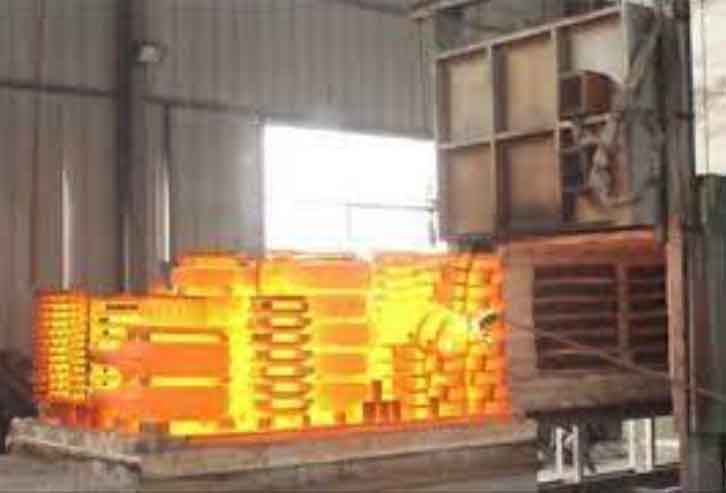Heat treatment plays a crucial role in the manufacturing of castings, transforming them from a raw foundry product into a finished component with the desired mechanical properties. This process involves controlled heating and cooling of the castings to modify their microstructure, improve their mechanical strength, enhance their hardness, and relieve residual stresses. Let’s explore the role of heat treatment in casting manufacturing in more detail.

- Stress Relief: Casting processes, such as solidification and cooling, can introduce internal stresses within the material. These stresses may result from uneven cooling rates or thermal gradients. Heat treatment, particularly annealing, is employed to relieve these residual stresses and minimize the risk of component failure during service.
- Softening and Homogenization: In some cases, castings may possess a coarse or non-uniform microstructure, which can lead to reduced mechanical properties. Heat treatment methods like normalization and homogenization aim to refine the microstructure, improve the material’s homogeneity, and enhance its mechanical characteristics.
- Grain Refinement: The as-cast microstructure typically consists of large grains due to rapid solidification. Heat treatment processes like grain refinement or grain size reduction are performed to break down these large grains into smaller ones, resulting in improved mechanical properties such as increased strength, toughness, and fatigue resistance.
- Hardening: Certain cast components require high hardness to withstand wear, abrasion, or impact. Heat treatment techniques like quenching and tempering are utilized to achieve the desired hardness level. Quenching involves rapid cooling from elevated temperatures, which imparts a hard structure, but it can also induce brittleness. Tempering follows quenching and involves reheating the casting to a specific temperature and holding it there for a precise duration to reduce brittleness while maintaining the desired hardness.
- Case Hardening: For castings that necessitate a hard and wear-resistant surface with a tough and ductile core, case hardening is employed. This process involves introducing carbon or nitrogen into the surface layers of the casting through methods like carburizing or nitriding, followed by heat treatment to achieve the desired hardness and depth of the hardened layer.
- Austempering and Martempering: Austempering and martempering are specialized heat treatment techniques used for achieving a combination of high strength and ductility in certain castings. These processes involve quenching the casting into a specific temperature range, followed by holding it at that temperature until the transformation is complete. This results in the formation of unique microstructures that provide excellent mechanical properties.
It’s important to note that the specific heat treatment processes and parameters used in casting manufacturing depend on the casting material, component design, intended application, and required properties. The heat treatment sequence is carefully determined through experimentation, engineering knowledge, and material science principles to ensure the desired final properties are achieved.
In summary, heat treatment plays a vital role in casting manufacturing by optimizing the mechanical properties of castings. It helps relieve residual stresses, refine the microstructure, improve hardness, increase strength, and enhance wear resistance. By tailoring the heat treatment processes to the specific requirements of the cast components, manufacturers can ensure that the final product meets the desired quality and performance standards.
